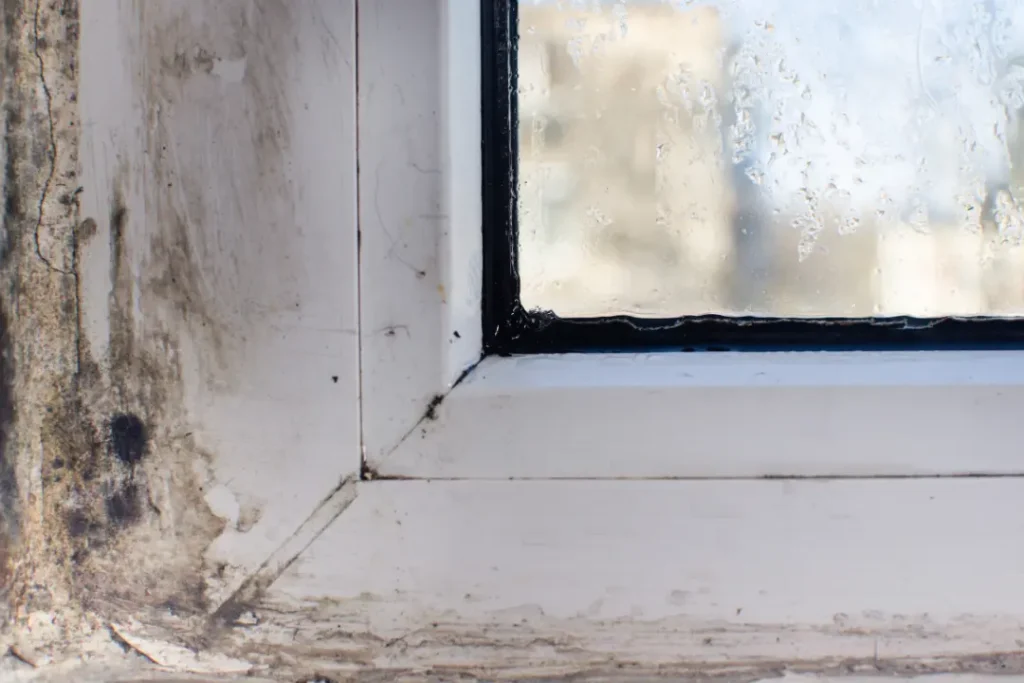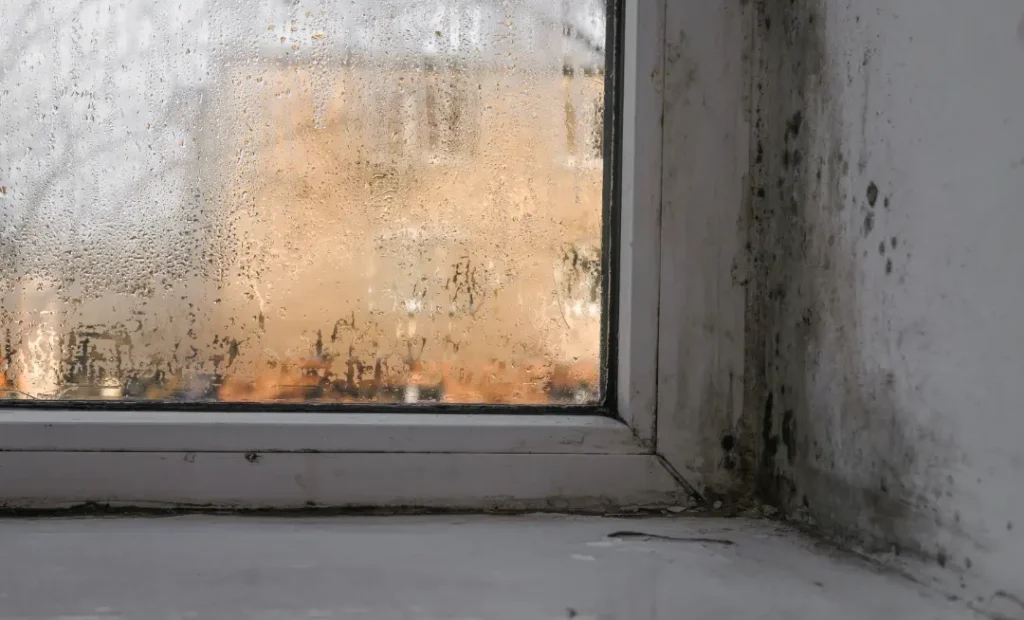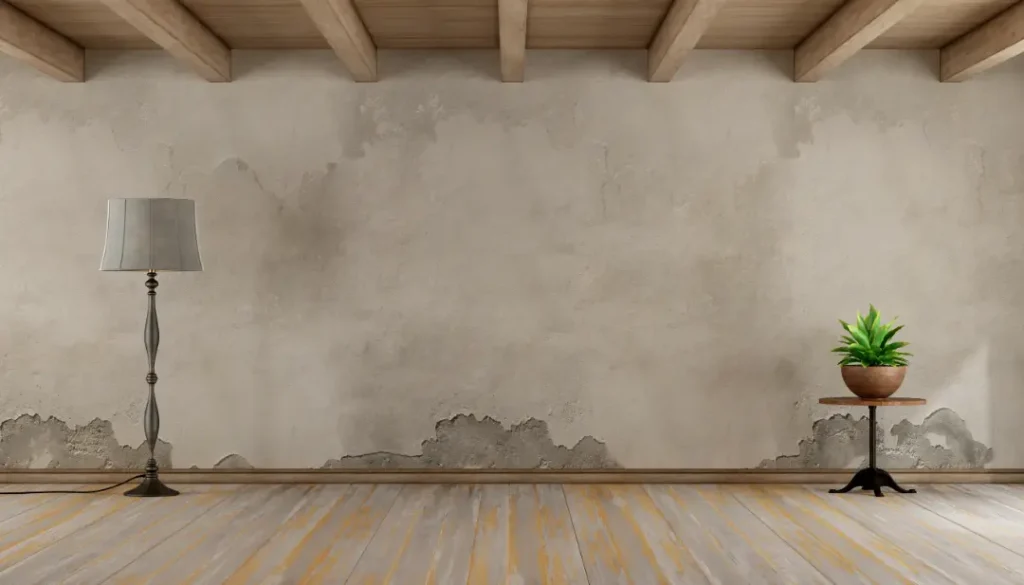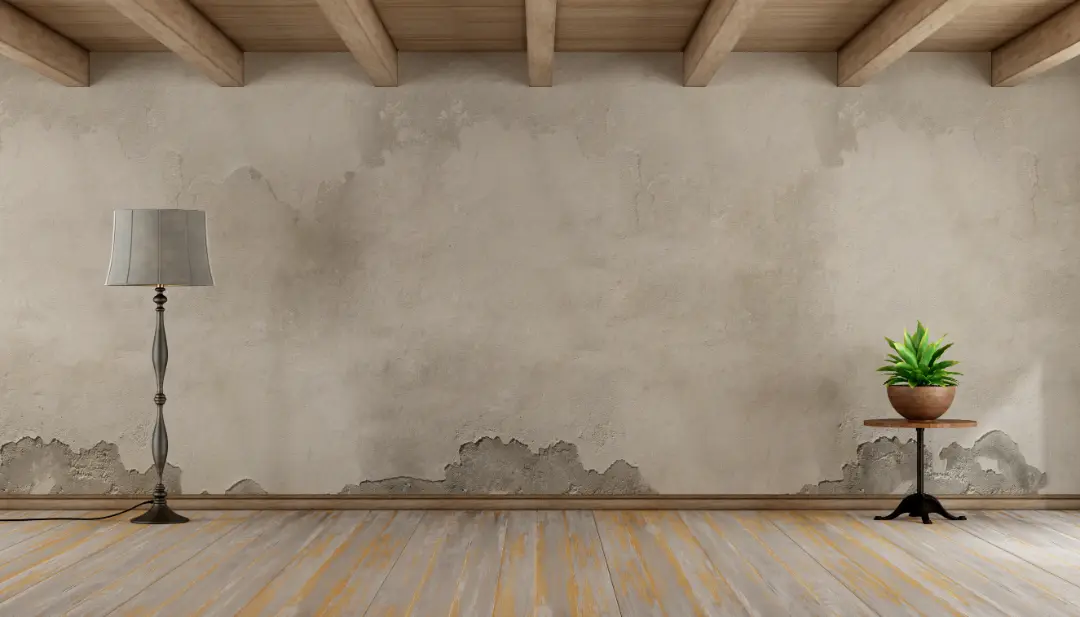Does home insurance cover damp? Mostly not. Policies typically exclude damage from maintenance neglect or gradual wear. However, sudden, accidental events might be covered.
This article explains what to check in your policy, how different damp types affect claims, and tips for prevention and maintenance.
Key Takeaways
- Home insurance typically covers damp damages, but exclusions apply; policyholders must review their specific coverage details and maintain their property to avoid claim denials.
- The type of damp—rising damp, penetrating damp, or condensation—affects insurance coverage, with rising damp often covered if proper maintenance is demonstrated.
- Regular maintenance is crucial in preventing damp issues and ensuring that homeowners remain eligible for insurance claims, as neglect can lead to claim rejection.
- Environ Property Services offers expert damp proofing solutions in London, helping homeowners prevent moisture damage, protect their property, and stay compliant with home insurance requirements.
Does Home Insurance Cover Damp?
It is important for homeowners to be aware of their home insurance coverage for damp problems. While many home insurance policies might provide coverage for damage caused by damp, the extent of this coverage can vary based on the policy’s wording. It’s beneficial to examine your policy closely and understand which exclusions and limitations apply, as standard policies often exclude wear and tear or gradual deterioration.
You should review your documentation or contact your insurance provider directly to clarify what specific damp-related issues are included under your policy. This preventative step is crucial for avoiding complications and unforeseen expenses that could arise later.
Insurance may cover repairs like fixing plaster or wallpaper if they were damaged due to an abrupt occurrence involving water. However, should a claim arise from continuous neglect or inadequate property maintenance leading to a damp problem, insurers might refuse it.
Therefore, homeowners must regularly perform upkeep tasks such as leak inspections, maintaining proper airflow within the house, and promptly handling minor concerns before they escalate into larger ones. Proper attention to household maintenance plays a pivotal role in securing approval for claims associated with damp conditions through one’s home insurance provider.

Types of Damp and Their Impact on Coverage
Your home can experience three primary kinds of damp issues: rising damp, penetrating damp, and condensation.
The distinctive features of each kind of dampness impact your insurance coverage. Recognising the particular form of damp in your home is vital to ascertaining the extent of insurance protection available to you.
Conducting a survey for dampness can reveal various problems, such as patches indicating moisture presence on internal and external walls, peeling paintwork due to moisture intrusion, or consistent decay over time. As a homeowner, it is crucial for you to possess this information to effectively manage your insurance policies and implement appropriate measures to rectify and prevent damping in your home.
Rising Damp
Rising damp is a common issue, especially in older homes without modern damp proofing measures. It occurs when moisture from the ground rises through the walls, leading to damp patches, peeling paint, and even structural damage. Common causes of rising damp include older homes without damp proofing, damaged damp proof courses, and landscaping that raises soil above damp proof courses. Home insurance generally covers damages caused by rising damp, but only if the damp proof course is adequate and there is no evidence of neglect.
Homeowners should ensure the damp proof course (DPC) and the damp course are in good condition to make a successful claim. If rising damp is caused by blocked guttering, faulty downpipes, or plumbing leaks, these issues must be addressed promptly to prevent further damage and ensure coverage. Rising damp can also lead to cosmetic and structural damage, as well as mould growth, which can be harmful to health.
Fixing rising damp often involves clearing debris inside the cavity wall construction and ensuring proper ventilation. Homeowners should be vigilant about maintaining their property and addressing any signs of rising damp immediately. Professional damp proofing treatments, such as installing a physical damp proof membrane, can provide long-term solutions and help protect their homes from future issues.
Penetrating Damp
When water infiltrates through the exterior of a building and seeps into the interior, this results in penetrating damp. It can cause damage, like damp spots on walls and flaking paintwork. Such problems often arise from inadequate upkeep, compromised brickwork or defective roofs, impacting both the inside and outside structures of a property.
Home insurance policies typically do not cover penetrating damp since it is frequently due to slow decay over time. If an insured event such as burst pipes is at fault for causing the dampness, then coverage might apply—making it crucial to pinpoint its root cause.
To effectively diagnose penetrating damp, you will need an expert damp proofing company to conduct a thorough inspection known as a ‘damp survey.’ The remedial approach includes addressing any defects that contribute to moisture ingress—this could involve implementing specific treatments designed for solid walls or rectifying complications associated with cavity wall insulation. For proper resolution and prevention of recurring issues, seeking guidance from an expert specialising in damp proofing is recommended.
Condensation
When moisture-laden air comes into contact with cooler surfaces, it often results in the formation of damp patches and can lead to the development of mould. Properties that lack adequate airflow are especially prone to this problem because, without proper ventilation, moisture has no way to dissipate and instead accumulates on various surfaces such as walls and windows.
This situation not only diminishes a home’s market value but could also complicate insurance claims unless promptly resolved.
To mitigate condensation issues, enhancing air circulation through improved ventilation is key, along with utilising dehumidifiers or ensuring spaces are sufficiently heated. Diligently removing any accumulated moisture from windowsills and wall surfaces can Help deter mould infestation.
Homeowners need to address condensation proactively in order to preserve their property’s structural health while sidestepping possible difficulties with insurance processes.
Common Causes of Damp Not Covered by Insurance
Insurance companies frequently deny coverage for damp issues attributed to inadequate property maintenance. To prevent the rejection of insurance claims, it’s essential to conduct routine upkeep on your home, such as cleaning gutters and checking that roofing remains intact. Damp problems considered by insurers to be the result of normal wear and tear or homeowner neglect typically fall outside the scope of home insurance coverage.
Coverage for penetrating dampness is excluded from standard insurance policies when it stems from gradual deterioration over time. Homeowners may also lose their right to make successful claims if they experience damp-related issues due to insufficient drainage systems or substandard building methods.
To avoid compromising their home insurance policy, homeowners must pay close attention to maintaining seals in wet areas like showers and bathtubs since leaks can lead to disqualifying levels of dampness. A vigilant approach to property maintenance is crucial in adhering to the conditions required for sustaining valid insurance coverage against potential damages caused by moisture intrusion.

Making a Claim for Damp Damage
When filing a claim with an insurance company for damp-related damage, it is essential to compile comprehensive documentation. This should include clear images and extensive notes on all damages linked to the damp issues, captured within 24 hours of detection. Prioritising the cessation of moisture ingress and mitigating any immediate risks before undertaking repair work is paramount.
Documentation evidencing regular maintenance and previous repairs can also serve as proof of responsible property care when submitting an insurance claim.
Engaging professional appraisers who can provide in-depth analyses of the damage may significantly bolster your case when making an insurance claim. Securing several estimates from various contractors will help affirm precise restoration expenses, which reinforces your claim’s validity.
Maintaining prompt and consistent communication with your insurance provider is key for efficiently processing the claim. Homeowners could find it advantageous to employ a claims management service that specialises in guiding them through the complexities involved with managing their insurance claims regarding damp damage repairs.
How to Prevent Damp in Your Home
Preventing damp in your home starts with regular ventilation to reduce moisture buildup. Here are some other ways to avoid damp:
- Heating all rooms can prevent cold spots.
- Closing kitchen and bathroom doors while cooking or showering.
- Regularly wiping condensation off windows.
- Ensuring proper drainage and clearing gutters of debris.
- Drying clothes on an airer instead of radiators.
- Checking for and treating any rotting around window frames.
- Applying masonry protection cream on external walls.
These preventative measures can help you maintain a dry and healthy home environment, reducing the risk of damp-related problems.

Environ Property Services: Eliminate Damp at the Source with Professional Assistance
Damp issues not only damages your home but can also be costly. At Environ Property Services, we provide a comprehensive, long-term solution that targets damp problems at their source rather than just addressing the symptoms.
Our process begins with a thorough damp survey to identify the exact cause, whether it’s rising damp, penetrating damp, or condensation. Based on this assessment, we create a customised treatment plan that incorporates advanced damp-proofing techniques, such as chemical injections, waterproof membranes, and improvements to ventilation.
Our approach ensures lasting protection for your home, safeguarding it against recurring damage and helping to maintain its structural integrity and value.
Why risk insurance disputes or costly repairs when you can prevent damp altogether? Let Environ Property Services provide a permanent fix that keeps your property dry, healthy, and insurance-compliant.
Book your professional damp survey today to protect your home.
Importance of Regular Maintenance
To prevent the onset of damp issues, it’s essential to consistently maintain your property since overlooking this responsibility can result in substantial harm. If insurers determine damp problems have occurred due to insufficient maintenance, they often dismiss related claims. It’s important to conduct routine inspections on aspects such as roofing, plumbing, and drainage systems to catch any potential concerns before they escalate into serious damp difficulties.
If homeowners neglect the necessary upkeep of their homes, insurance policies might exclude coverage for claims connected with damp damage. This disregard not only increases the likelihood of encountering damp complications but also exposes homeowners to financial risks when submitting insurance claims. Diligent property care by homeowners is imperative to safeguard against these eventualities and ensure compliance with insurance policy standards.
Conclusion
Grasping the intricacies of home insurance policies regarding damp coverage is crucial for all homeowners. It’s important to regularly maintain your property and address damp problems swiftly to make sure that any related insurance claims are approved.
Determining the specific kind of damp affecting your home and getting professional assistance when needed can help you avoid hefty repair bills and potential health risks.
By being proactive, keeping up with diligent maintenance, and consulting damp proofing specialist such as Environ Property Services, you can safeguard your residence against issues caused by damp.
Frequently Asked Questions
Does home insurance cover all types of damp?
Home insurance may cover damp issues, but this is contingent upon the policy specifics and whether the dampness resulted from sudden events rather than neglect. Always review your policy for detailed coverage information.
What are the common types of damp?
Common damp problems generally fall into rising damp, penetrating damp, and condensation, each posing unique challenges and implications for property maintenance.
Understanding these types is essential for effective management and prevention.
Is rising damp covered on the ground floor damp walls by home insurance?
Rising damp covered by home insurance on ground floor damp walls depends on your policy terms, usually requiring proof of proper maintenance and an intact damp proof course. Always review your policy for details.
When should I consult a professional for damp issues?
You should consult a professional for damp issues if they persist despite your attempts to address them with DIY solutions. Engaging a qualified damp specialist is essential in such cases.

